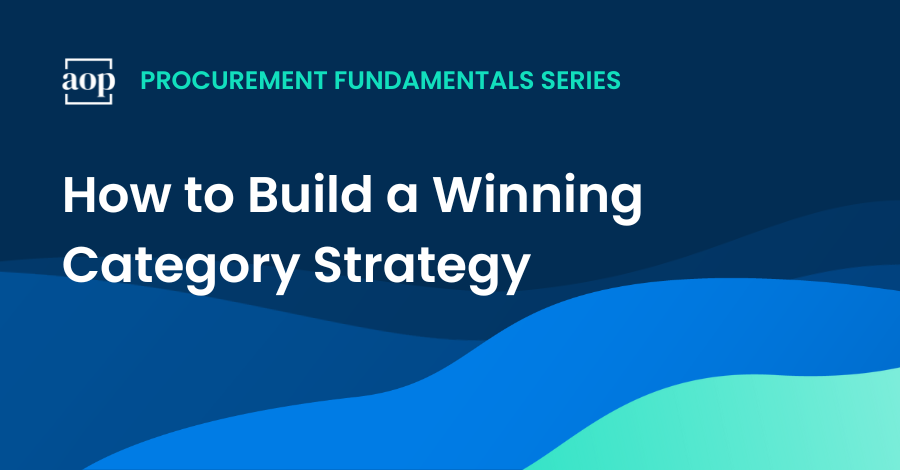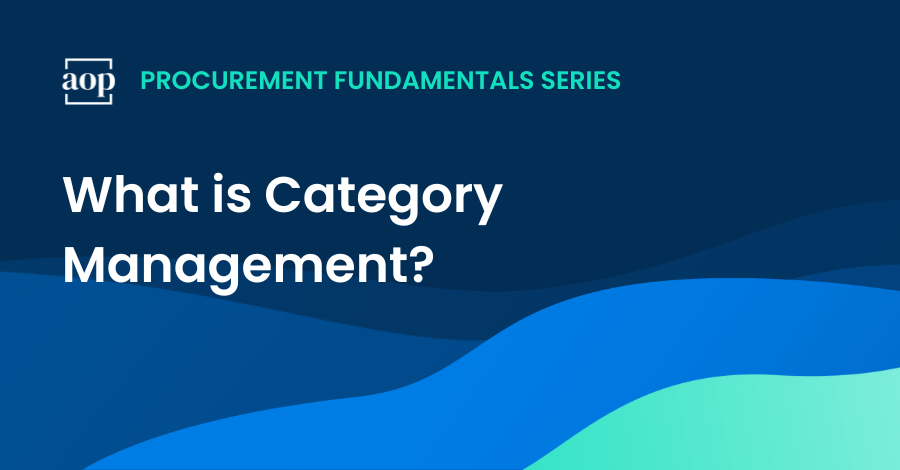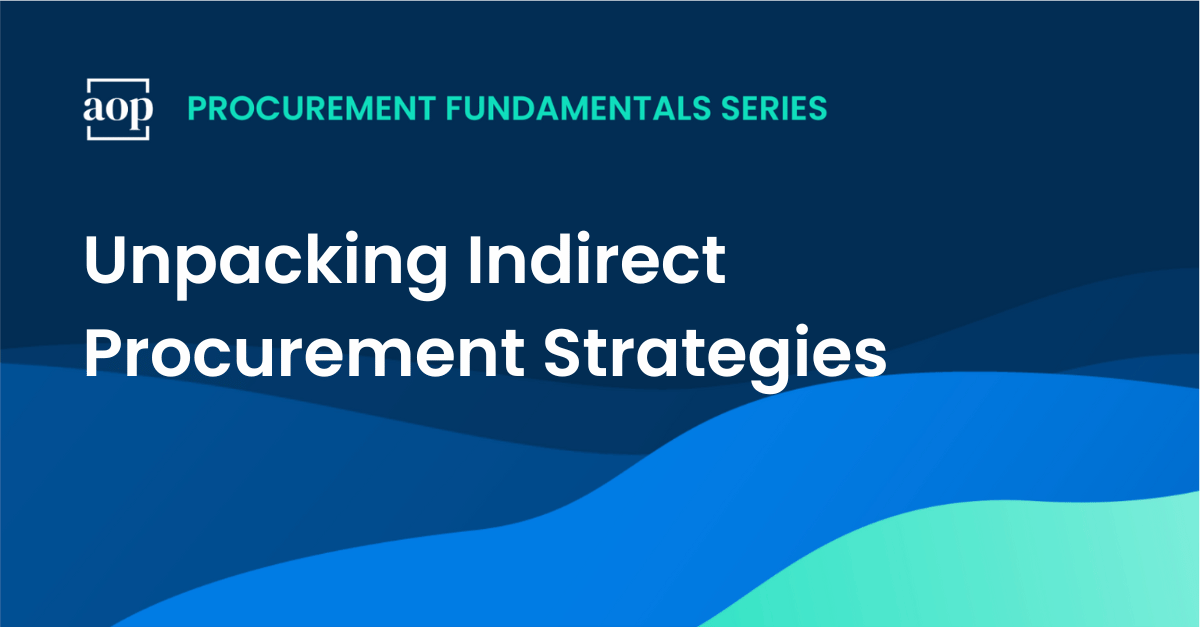6 min read
How to Build a Winning Category Strategy with Help from a True Procurement Expert
Philip Ideson : April 30, 2024

There is no easy template for building a category strategy, but with expert advice you can formulate a strategy that meets the unique requirements of your category or business objectives.
In episode 84 of the Art of Procurement podcast, Bill Michels shares expert advice for developing a category strategy that will align with your business goals and deliver substantial value.
Michels, with a career spanning several decades in procurement and supply chain management, offers a library of knowledge that can help you elevate your procurement strategies from mere cost savings to significant value drivers.
His approach is not just about spending less, but spending smarter. Before we dive into the expert advice, let’s review some fundamentals.
What is a category strategy?
A category strategy is a tailored plan that outlines how to manage and optimize a specific procurement category to achieve competitive advantage, cost savings, and improved supplier relationships.
A category strategy requires a methodical approach to procurement that focuses on the specific categories of goods and services your organization needs. In direct categories you may have a more hands-on role, while in indirect categories the strategy may be focused on supporting key stakeholders as they select suppliers or manage their budget.
By treating each category as a distinct unit with its unique market dynamics and business impact, you can adjust your strategies to maximize efficiency, reduce costs, and build key stakeholder relationships.
You can’t have category strategy without business strategy
Your category strategy should always mirror the strategic goals of your organization. For instance, if your company has a strong focus on sustainability, your procurement strategies should favor suppliers who adhere to environmentally sustainable practices. This alignment not only ensures consistency across all procurement operations but also strengthens your company’s commitment to its core business values.
Continuous savings is not a strategy
According to Bill Michels, the most effective category strategies look beyond mere cost savings. They aim to add significant value to the organization by improving product quality, ensuring timely delivery, and fostering innovation.
For example, switching from a traditional material to a more cost-efficient, environmentally friendly alternative can reduce costs and improve the sustainability of your products. Talk about a win-win scenario.
10 key components of a category strategy
You’ll find that there are many different factors to consider when building a category strategy.
Based on his decades of experience working in procurement, Bill Michels describes 10 components of a category strategy:
- Identification of all of the current and future business requirements from cost to innovation and breakthrough
- Assessment of the global market in terms of Porter’s five forces
- Breakdown of the cost drivers through a cost modeling process
- Understanding of the price history and its relationship to the market
- Research of technology
- Review of global suppliers and their capability
- Assessment of supply risk
- Map of the supply chain
- Cost and ROI for implementation of the strategy
- Scenario planning to assure agility and resilience
How to develop a category strategy in just three steps
With so many components to consider, it’s easy to get stuck developing a category strategy. Let’s break this down into three simple steps.
You can picture the category strategy Michels describes coming in three key phases: initial setup, execution, and continuous improvement.
1. Initial planning and setup
The first step in crafting a compelling category strategy is to clearly segment and define category needs and priorities.
Define clear business needs
Bill Michels emphasizes the importance of a detailed business requirements analysis: “One of the first things you have to do in any category strategy is really define what are the business requirements, business needs.” This involves dissecting the operational and strategic roles that the category plays in your company’s success.
Smart category segmentation
Michels suggest you define clear category segmentations. “You have to really do some due diligence on the front end. So you really have to understand, for instance, the segmentation piece. So is [the category] really a strategic part of the business or is it really leverage and you can be tactical with it? Or is it really something you have to look at a risk on?”
Engage key stakeholders actively and early
You can’t develop an effective category strategy in isolation. Ensure that stakeholders are part of the conversation from the start. Michels explains, “If you try to do it in isolation you’re bound to fail… because in isolation you’ll miss business needs and that will give stakeholders an opportunity not to play.”
2. Execution of the strategy
Once the category needs are defined and stakeholder needs are understood, the next step involves evaluating and selecting the right suppliers.
Supplier evaluation goes beyond price
This phase is about more than just finding the lowest bidder; it’s about finding partners who can meet the business’s qualitative and quantitative needs. Michels advises a thorough competitive process, highlighting the importance of understanding the marketplace and supplier capabilities: “You have to understand… who are all the suppliers in the marketplace… where are these suppliers located? What are their strengths?”
With a clear understanding of requirements supplier selection is straightforward
Using a strategic approach to supplier selection can lead to substantial cost savings and improvements in service delivery. Michels shares a compelling example from his experience buying office supplies. Initially each business location had different requirements for buying office supplies. Through a category-focused strategy the needs were aligned and consolidated. “We did understand the requirements, put them out on a reverse auction, and we saved $1.1 million out of $2.2, so a 50% cost reduction.” Such outcomes underscore the value of a meticulously planned and executed category strategy.
3. Drive continuous innovation and change
A well defined and executed category strategy needs to stay flexible. The third step of maintaining a winning category strategy is to analyze and adapt over time.
Foster innovation within the procurement process
Michels mentions a case where a change from petroleum-based products to vegetable-based alternatives significantly impacted an entire industry. Through analyzing the cost components of production, Bill’s team observed vegetable-based oils costing $3 per pound as a realistic alternative to petroleum-based oils which had in the past cost $11 per pound. “The industry would have to change if one company went green… and the cost was preventing them from going green.” By addressing and altering the cost barriers, the company not only achieved cost savings but also initiated a broader industry shift towards more sustainable practices.
How to overcome common challenges in your category strategy
You can have a perfectly formed strategy, but effective category management is easier said than done. Here are common areas where a category strategy may come undone.
Understand the diverse needs of stakeholders
According to Bill Michels, a major hurdle is managing the diverse needs and preferences of stakeholders, especially when the control over budgets and decisions lies beyond the category manager or procurement department.
He explains, “If you’re working in indirect and you’re trying to drive a category strategy, you really have no control… All you can really do is influence the spend.” The key to overcoming this challenge lies in mastering the art of influence. You need to present procurement not just as a cost-cutting function but as a value-adding partner in the organizational process.
Make sure stakeholders feel included in the strategy
Michels also emphasizes the importance of involving stakeholders early in the process to avoid resistance and ensure that the category strategy aligns with broader business objectives. He notes, “They [stakeholders] may have developed the process that you’re tearing down… They may feel a loss of power.”
To mitigate such issues, it’s crucial to engage stakeholders from the outset, involving them in defining business needs and developing sourcing strategies. This inclusive approach helps align goals and reduces resistance, facilitating smoother implementation of the category strategy.
Ensure stakeholders stay aligned and engaged
Effective category management requires ongoing communication and collaboration. Michels advises keeping stakeholders involved at key points throughout the process, particularly during business needs analysis and strategy development. This ongoing engagement ensures that the category strategy remains aligned with evolving business needs and stakeholder expectations.
In addition, Michels suggests employing specific strategies to manage different types of stakeholders according to their level of influence and interest in the project. By understanding and addressing their concerns, you can turn potential blockers into allies, fostering a collaborative environment that benefits the entire organization.
How to maintain a winning category strategy
To measure the effectiveness of a category strategy, it’s essential to establish clear, quantifiable performance indicators. Not only that, you need to allow for continuous improvement and adaptation to market changes.
Focus on the right KPIs and metrics
Michels advises not only focusing on cost savings but also on evaluating how well the strategy enhances operational efficiency, improves quality, and drives innovation. He provides examples of how category strategies have led to significant industry changes and cost reductions, illustrating the potential for procurement to impact broader business outcomes.
Enable continuous improvement
Continuous improvement is another critical aspect of a successful category management framework. Michels stresses the importance of regularly reviewing and refining category strategies to ensure they adapt to changes in the market and internal business conditions. He notes, “As we get more transparency into the suppliers, we get to understand what are the drivers of the business? How are the business needs changing?” This approach ensures that procurement strategies remain relevant and continue to deliver value over time.
Adapt to market changes
In a dynamic business environment, the ability to adapt quickly to market changes is vital. Michels highlights the importance of staying ahead of industry trends and adjusting category management processes accordingly. Whether it’s through adopting new technologies, leveraging data analytics, or exploring sustainable alternatives, staying flexible and proactive in your category strategy can provide a competitive edge and drive long-term success.
Key takeaways for building a winning category strategy
By adopting the strategies and insights shared by Bill Michels in episode 84, you can elevate your procurement processes, overcome common challenges, and ensure that your category management efforts add significant value to your organization.
Remember, effective category strategy is not just about reducing costs—it’s about strategic buying that aligns with business goals, enhances operational efficiency, and drives innovation. As you continue to refine your approaches and engage with stakeholders, you’re well on your way to proving the strategic role of the procurement function.
If you want to see more tips, visit our Category Management Best Practices Hub.
More expert views on category management
Broaden your understanding of category management by listening to these expert interviews on the Art of Procurement podcast:
- Advanced Category Management: Organizational Building Blocks with Lynn Rideout and Chris Eyermann
- Advanced Category Management: Category Mangement Imperatives with Lynn Rideout and Chris Eyermann
- The Differentiators of Category Management Leaders & Followers with Mark Webb
- Navigating the Perfect Storm Using Category Management with Stephane Morel







